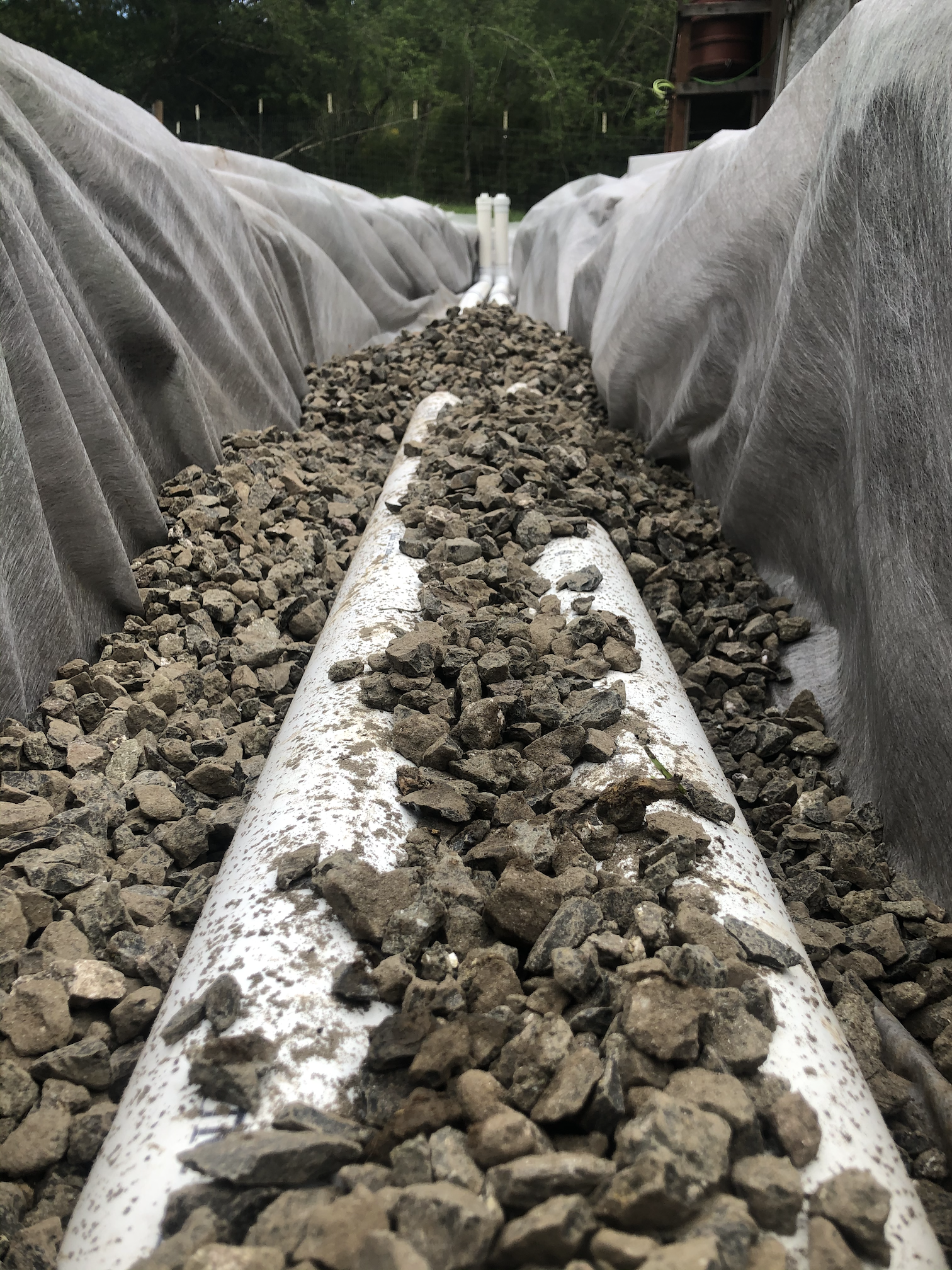French Drains
Purpose
French Drains manage surface and ground water, typically installed to:
protect structures from uphill water
protect foundations from water saturation
drain water out of the soil from areas prone to flooding
Installation
All of our french drains are installed with commercial drain pipe, geotextiles and drain rock. Our excavations are wide to allow for maximum water capture and retention. They are excavated deep and sloped to move water away from the afflicted area.
Discharge
After the water is captured it must be discharged elsewhere - typically off the property or into an infiltration pit. Sometimes a sump pump will need to be installed if no gravity flow is available. Right of way permits are typically required for discharge into the street (curb cuts), and they are easily acquired. Infiltration pits ( dry wells ) are often installed with a an overflow discharge or pop-up emitter.
System Components
French drains are typically just one component of the overall water management strategy for the property. The foundation should be waterproofed with a membrane and drain board. A footing drain needs to be installed around the perimeter, designed to move the water away from the foundation. The earth should be graded away from house and sloped so as not to pool. Slabs should divert water with channel drains as necessary, and french drains should be installed to catch water runoff. Downspouts should extend away from the house. Sump pumps should be installed where necessary. Crawlspaces should be encapsulated and clean. Basement interior drains should be installed when the foundation waterproofing system is not working properly, and the expense is too great to reinstall one.
French Drains: The Ultimate Solution to Your Water Drainage Problems
Water drainage problems are a common issue faced by homeowners. The accumulation of water around the foundation of your house can cause severe damage, such as basement flooding, mold growth, and foundation cracking. Fortunately, French drains are an effective and efficient solution for tackling water drainage problems.
What is a French Drain? A French drain is a trench filled with gravel or rock, which contains a perforated pipe that redirects water away from your home's foundation. The pipe carries water to a designated area where it can be absorbed or drained into the ground.
How Does a French Drain Work? A French drain works by collecting water from the surrounding area and channeling it away from your home's foundation. The trench is typically 6-12 inches wide and 18-24 inches deep. The perforated pipe is placed at the bottom of the trench and covered with gravel or rock. This allows water to enter the pipe through the perforations and flow towards the designated area.
Why Install a French Drain? Installing a French drain offers several benefits, including:
Prevents Basement Flooding A French drain helps to prevent basement flooding by directing water away from your home's foundation. This prevents water from accumulating and seeping into your basement, causing costly damage.
Protects Your Home's Foundation Water accumulation can cause foundation damage, such as cracks and shifting. A French drain helps to protect your home's foundation by channeling water away from it.
Reduces Soil Erosion Water accumulation can cause soil erosion, which can lead to uneven terrain and damage to your landscaping. A French drain helps to reduce soil erosion by redirecting water away from the surrounding area.
Prevents Mold and Mildew Growth Excessive moisture can lead to mold and mildew growth, which can cause health problems. A French drain helps to prevent moisture buildup by redirecting water away from your home's foundation.
How to Install a French Drain Installing a French drain requires some excavation work, which can be challenging for homeowners. It is recommended to hire a professional to install your French drain to ensure it is installed correctly and effectively.
The first step in installing a French drain is to determine the appropriate location and path for the drain. This involves identifying the areas where water accumulates and determining the best path to redirect the water away from your home's foundation.
Once the path is determined, the trench is excavated to the appropriate depth and width. The perforated pipe is then placed at the bottom of the trench and covered with gravel or rock. The trench is then filled with additional gravel or rock to provide proper drainage.
Conclusion French drains are an effective and efficient solution for water drainage problems. They provide numerous benefits, including preventing basement flooding, protecting your home's foundation, reducing soil erosion, and preventing mold and mildew growth. If you are experiencing water drainage problems, consider installing a French drain to protect your home and landscaping.
Typical Services
French drains
Curtain drains
J drains
Yard drains
Surface water runoff
Yard flooding
Water management
Drainage basin
Drainage rock
Drainage System
Drain pipe
Yard standing water
Drainage gravel
Drain yard flooding
Yard sump pump
Yard flooding

